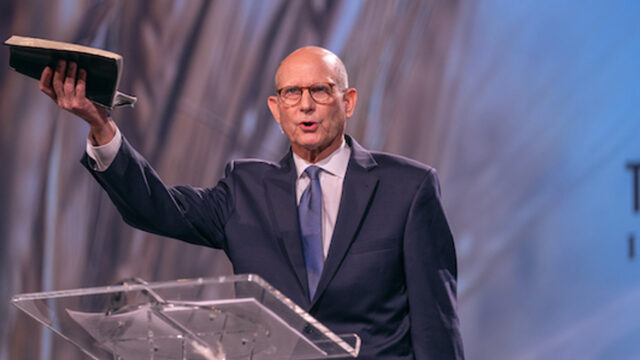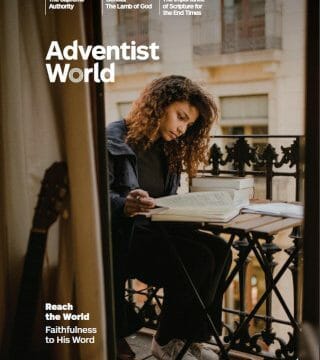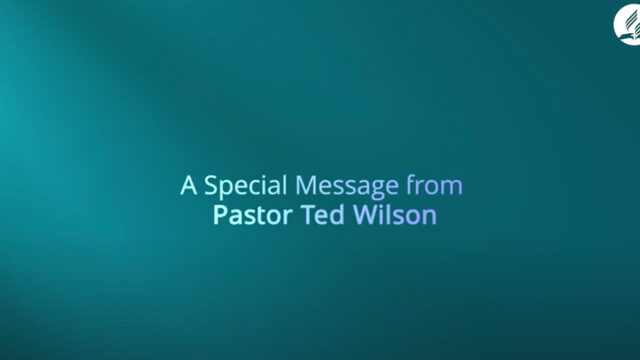The most widely sold piece of art, literature, entertainment—however you wish to classify it—is the Bible. People reading this Book soon become “believers” […]

The most widely sold piece of art, literature, entertainment—however you wish to classify it—is the Bible.
People reading this Book soon become “believers” or “followers.” They are also known as Christians and represent the largest single religious group on earth.
But over the course of the past 2,000 years, this group has been anything but homogenous. They worship differently, use different versions of the Book, have varying beliefs and worldviews, yet all still claim to follow the teachings—for the most part—of the Book.
What do we do with such a vast number of conflicting opinions found in this large conglomeration called Christianity? Is religion the answer to the world’s problems or, as some would say, its cause?
If nothing else, it’s good to understand a worldview that nearly one out of every three persons on earth subscribes to, especially considering that nine out of 10 people on earth claim to be “religious” or “spiritual.”
Getting the Back Story
We owe it to ourselves to understand the story, the framework for why someone believes something. If someone says they are afraid of or hate snakes, is it because they have been attacked by one? Or could it be they were taught to fear snakes by someone else? If someone says they are afraid or suspicious of the Bible or Jesus, is it because they had a personal encounter with either, or were they taught this, or worse, encountered someone else who told them what it was but they never encountered it for themselves?
We owe it to ourselves to look to the source to see if people are accurately portraying the true story of the Bible, or just bits and pieces of it.
Just like someone retelling a story, or a film, or a book, and leaving out key details, it’s possible that the big story told in the Bible is often told by leaving out key details.
Book Beginning
So let’s look at the beginning.
“In the beginning God created the heavens and the earth” (Gen. 1:1).
That is the first sentence of the Bible. Was this the beginning of everything, or just everything on earth? What does this mean for the theory of evolution? Who is God? Why would God create a new planet and fill it with animals, plants, and humans? The Bible begins here, but it’s not where the story begins. We have to read the whole story to learn why this line is used to start the Book.
As with any riveting story, at times we’re thrown into it midstream and have to figure out what happened before, and what may come after.
So here is a question: Was the creation of the earth and humans a solution with the potential to solve a problem?
Story Beginning
As we begin to uncover parts of the story, we learn key elements that bring everything into its proper place.
The story begins in what we call heaven. I don’t know its exact location. All is at peace. The citizens sing. They eat. They travel. They spend time with each other. They work. They play.
They don’t cry. They don’t die. They don’t lie.
It’s that last line that is key. We are told that there was a principle or law in this utopia, and when Satan rebelled against the law of God, the thought that there even existed a law came to the angels almost as an awakening to something unthought of.*
How was life in the universe before the entrance of sin? No citizen of heaven lived life just for themselves. Serving and loving others came naturally. In fact, no citizen did anything that could be considered selfish. This meant no one stole. No one slept with their neighbors’ spouse. No one got angry. Everybody had one joy in life: loving their neighbors as much as they loved themselves.
This was not a society in which all looked the same and had the same job and lived a boring life. This society had order, hierarchy; and all were happy with their gifts and position in society.
We learn the rest of the story in Scripture, specifically why the controversy between good and evil began.
Isaiah 14 and Ezekiel 28 tell us more about someone who was the covering cherub in the heavenly throne room, created perfect and beautiful. He was once called Lucifer, “light bearer,” but became Satan the adversary. We learn that he wanted to be like God but broke the law of heaven (Eze. 28:15). Instead of making the earth a happy place, he was accused of stealing joy, killing life, even destroying the cities of the world (cf. John 10:10; Isa. 14:14, 17). We learn from Job 1 that at times he was even given the power to manipulate the weather and cause natural disasters. He hates humanity so much that he stopped at nothing in Eden to deceive Adam and Eve (Gen. 3). Today he stops at nothing to continue to cause disasters everywhere.
Why Is This So Important?
Understanding this metanarrative of how and why evil began, and how it will end, is the greatest gift the Seventh-day Adventist Church can offer the world. Sabbath takes on new significance as a day to remember not just that we were created, but why we were created in light of this ongoing war. In this paradigm we understand why the teaching of the heavenly sanctuary is so important; why we understand the law as being at the center of the controversy; why Lucifer was jealous of the Son of God; and how rebelling against the law of love led to war in heaven. All these accounts are essential to making sense of the world around us today.
With this understanding we can more easily explain that there is a war in the galaxy whose end is not only promised but anticipated very soon. God has been gracious to explain current and soon-coming events to the world through the books of Daniel and Revelation, and also through the lens of the heavenly sanctuary. The good news is that the devil “knows that he has a short time” (Rev. 12:12), because Jesus has promised, “Behold I am coming quickly” (Rev. 22:12).
* Ellen G. White, Thoughts From the Mount of Blessing (Mountain View, Calif.: Pacific Press Pub. Assn., 1956), p. 109.








